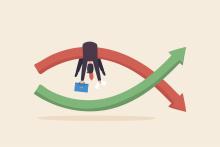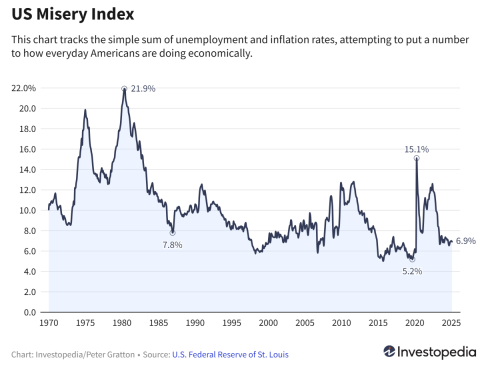Stagflation
More and more we consider the possibility of stagflation. While there is still not enough data to draw any strong conclusions, we are concerned that tariffs combined with inflation may create a situation where the economy begins to stall.
Additionally, inflationary pressures could further erode the overall health of the economy. This is particularly concerning given the U.S. economy is significantly dependent on consumer consumption and spending.
We had originally thought that a recession was a slight possibility, but we believe now that stagflation is a higher probability. I don't expect we'll see 1970 style stagflation; things are not that bad. But stagflation in the end is not a good thing.
We are carefully monitoring conditions. It's going to take several months of data points for us to make a more definitive conclusion, but at this point, we think it's important to suspect stagflation may appear. This will impact our investment strategy.
Please see below information on stagflation.
***
Begin Quote
“What Is Stagflation?
Stagflation combines stagnant economic growth, high unemployment, and persistent inflation. It defies traditional economic models, which typically show inflation rising during strong economic growth and falling during recessions.
British politician Iain Macleod first used the term "stagflation" in a 1965 speech to the House of Commons to describe the U.K. economy. The term gained far wider prominence during the 1970s oil crisis when OPEC's embargo triggered a dramatic increase in energy prices in the U.S. and Europe. This supply shock drove up production costs across the economy while simultaneously reducing economic output.
The severity of stagflation can be measured by the "misery index," a straightforward sum of the inflation and unemployment rates. As the misery index rises, Americans face the painful combination of fewer available jobs and declining purchasing power.
Stagflation is particularly troublesome because the traditional tools that address one problem typically worsen the others. A tight monetary policy (increasing interest rates) to fight inflation typically slows growth and thus increases unemployment, while stimulus measures (increasing government spending) to boost growth may accelerate inflation since that increases demand in the market, putting pressure on prices. This policy dilemma explains why stagflationary periods like the 1970s tend to be prolonged and difficult to resolve.
The mid-2020s provides an economic environment with all the classic precursors to stagflation—rising prices caused by significant new tariffs likely to increase inflation and tamp down demand, thus dragging down growth—which is why Fed officials were quick to warn about rising prices and slowing growth.
Worryingly, the potential stagflation of the mid-2020s would occur in an economy with much higher debt levels and lower interest rates than in the 1970s, limiting the policy options available to governments and central banks.”
End Quote
Source: https://www.investopedia.com/terms/s/stagflation.asp



